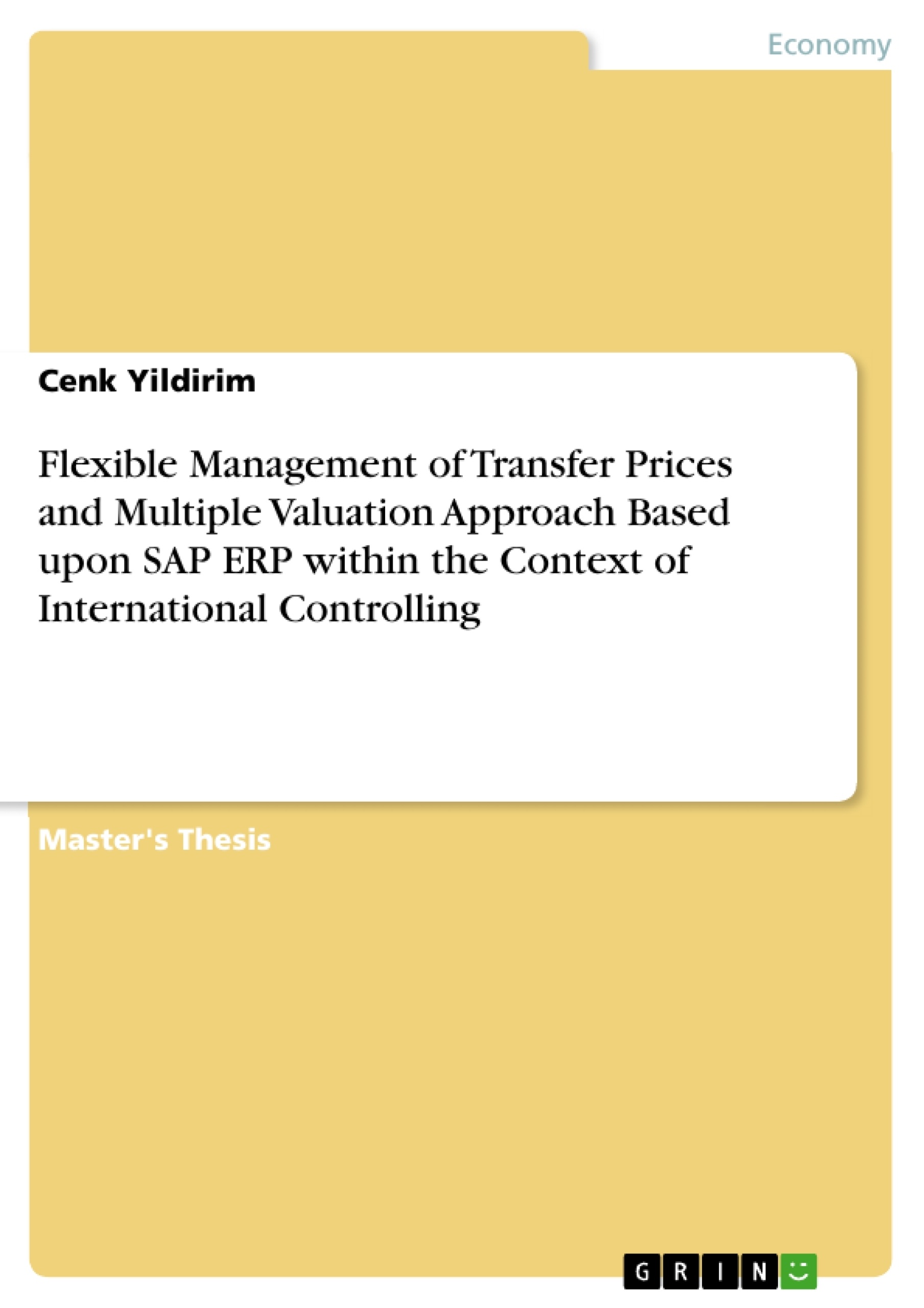According to the estimations of the World Trade Organization, sixty percent of the whole world trade is being concluded within the multinational enterprises. This can be put down to the fact that globalization has had led the enterprises separate business processes into divisions and the concept of “profit center” has gained currency in this regard. As a result of “vertical integration” between these profit centers, there is an enormous volume of exchanged goods within multinationals. This development in the practice gave rise to debates on an already existing issue, “Transfer Pricing”, however, from another dimension. The inter-company transfer of goods has gone beyond the domestic boundaries, and become an important issue in the international context. International Transfer Pricing can be assumed as an opportunity as well as a confounding factor from the perspective of multinational enterprises. On the one side, it is possible to move profits between individual divisions and create tax advantages depending on the corporate tax rates in different tax jurisdictions. On the other side, it becomes more complex for companies to track down the effects of intra-company transfers, evaluate the efficiency of the divisions and the company as a whole and make optimal decisions accordingly. At this point, some academicians propose using a multiple set of books to determine Transfer Prices. In so doing, they argue that managerial requirements can be met and optimal decisions can be reached for the good of the group as a whole.
In the light of this information, a software product named SAP® ERP® comes to attention with its unique feature in terms of determining Transfer Prices flexibly. The multiple valuation approach in this system enables the user set Transfer Prices in different valuation techniques, i.e. legal view, group view and profit center view. This study investigates the relationship between these two research objects; thus, aims to verify whether and up to which extent implementing such a system is functional and beneficial by composing Transfer Pricing and managerial requirements that come along with it.
Inhaltsverzeichnis (Table of Contents)
- 1 Introduction
- 1.1 Motivation and Problem Design
- 1.2 Limitations of the Study
- 1.3 Research Methodology and Structure
- 2 Theoretical Framework and Essentials
- 2.1 The Term Controlling and its Conceptions
- 2.2 Controlling Tasks and Instruments
- 2.3 Controlling in International Context
- 2.3.1 Comparative Approach - Management Accounting vs. Controlling
- 2.3.2 Specific Features of Controlling in Multinational Enterprises
- 2.4 Basics of Transfer Pricing and Related Terms
- 3 Transfer Prices in the Management Practice
- 3.1 The Relation Between Transfer Prices and Divisional Structure
- 3.2 Functions and Purposes of Transfer Prices
- 3.3 Alternative Methods of Transfer Pricing
- 3.3.1 Setting Transfer Prices from the Business Administration Perspective
- 3.3.2 Setting Transfer Prices from the Tax-Regulating Perspective
- 4 Flexible Management of Transfer Prices Based Upon SAP ERP and Multiple Valuation Approach
- 4.1 The Efficacy of SAP ERP in Transfer Pricing
- 4.2 The SAP ERP System
- 4.2.1 Basic Facts About SAP and the Standard Software ERP
- 4.2.2 The Structure of SAP ERP and Relevant Modules
- 4.2.3 Controlling in SAP ERP
- 4.2.3.1 Controlling Enterprise Structure
- 4.2.3.2 Customizing Controlling Organization
- 4.3 Designing Transfer Prices and Multiple Valuation Approach in SAP ERP
- 4.3.1 Configuring Multiple Valuations
- 4.3.2 Configuring Profit Center Accounting
- 4.4 Economic Viability of SAP ERP Implementation
Zielsetzung und Themenschwerpunkte (Objectives and Key Themes)
This study investigates the relationship between flexible transfer pricing management using SAP ERP and the managerial requirements within multinational enterprises. The main objective is to determine the functionality and benefits of implementing such a system. * The role of transfer pricing in multinational enterprises. * The challenges of managing transfer pricing in an international context. * The functionalities of SAP ERP in managing transfer pricing. * The multiple valuation approach within SAP ERP. * The economic viability of implementing SAP ERP for transfer pricing management.Zusammenfassung der Kapitel (Chapter Summaries)
1 Introduction: This introductory chapter establishes the context of the study, highlighting the increasing significance of transfer pricing within multinational enterprises due to globalization and vertical integration. It introduces the core problem—the complexity of managing transfer prices while satisfying managerial needs—and outlines the study's aim to investigate the suitability of SAP ERP's multiple valuation approach as a solution. The chapter also briefly discusses the limitations and methodology employed in the research. 2 Theoretical Framework and Essentials: This chapter provides the theoretical foundation for the study. It defines "controlling" within an international context, highlighting the differences between management accounting and controlling, and detailing the unique features of controlling in multinational companies. Crucially, this chapter lays out the basics of transfer pricing, defining relevant terms and setting the stage for the analysis of different transfer pricing methods in later chapters. 3 Transfer Prices in the Management Practice: This chapter delves into the practical aspects of transfer pricing within organizations. It explores the relationship between transfer pricing and divisional structures, detailing the functions and purposes of transfer prices within a company. The chapter then presents and critically analyzes various alternative methods for setting transfer prices, examining both business administration and tax-regulating perspectives, including market-based, cost-based (marginal and full cost), and negotiated transfer pricing methods. 4 Flexible Management of Transfer Prices Based Upon SAP ERP and Multiple Valuation Approach: This chapter constitutes the core of the thesis. It investigates the capabilities of SAP ERP in managing transfer prices effectively. The chapter provides an overview of the SAP ERP system, focusing on relevant modules and its controlling functionalities. A detailed explanation of how to configure multiple valuations and profit center accounting within SAP ERP to manage transfer pricing flexibly is provided. Finally, the chapter discusses the economic feasibility of implementing the SAP ERP system, considering factors influencing implementation costs and potential returns on investment.Schlüsselwörter (Keywords)
Transfer Pricing, Multinational Enterprises, SAP ERP, Multiple Valuation Approach, International Controlling, Management Accounting, Profit Centers, Tax Optimization, Divisional Structure, Cost-Based Transfer Pricing, Market-Based Transfer Pricing, Negotiated Transfer Pricing.
Frequently Asked Questions: Flexible Management of Transfer Prices Based Upon SAP ERP and Multiple Valuation Approach
What is the main topic of this document?
This document provides a comprehensive overview of a study investigating the relationship between flexible transfer pricing management using SAP ERP and the managerial requirements within multinational enterprises. The main focus is on determining the functionality and benefits of implementing such a system.
What are the key themes explored in this study?
The study explores several key themes, including the role of transfer pricing in multinational enterprises, the challenges of managing transfer pricing internationally, the functionalities of SAP ERP in managing transfer pricing, the multiple valuation approach within SAP ERP, and the economic viability of implementing SAP ERP for transfer pricing management.
What is the structure of the document?
The document is structured into four main chapters: An introduction outlining the study's aims and limitations; a theoretical framework explaining controlling and transfer pricing concepts; a chapter on the practical aspects of transfer pricing in management; and finally, a core chapter detailing the use of SAP ERP and its multiple valuation approach for flexible transfer pricing management, including economic viability analysis.
What are the objectives of the study?
The main objective is to determine the functionality and benefits of implementing SAP ERP for flexible transfer pricing management in multinational enterprises. The study aims to investigate how the system addresses the complexity of managing transfer prices while meeting managerial needs.
What are the limitations of the study?
The specific limitations of the study are briefly mentioned in the introduction but aren't detailed in this preview.
What is the research methodology?
The research methodology is briefly outlined in the introduction, but specifics are not included in this preview.
How does the study define "controlling" in an international context?
The study defines "controlling" within an international context, differentiating it from management accounting and highlighting the unique challenges of controlling in multinational companies. This is elaborated in Chapter 2.
What are the different transfer pricing methods discussed?
The study discusses various transfer pricing methods, including market-based, cost-based (marginal and full cost), and negotiated transfer pricing methods, examining them from both business administration and tax-regulating perspectives. This is detailed in Chapter 3.
What is the role of SAP ERP in this study?
SAP ERP is central to the study, investigated as a solution for flexible transfer pricing management. The study explores its functionalities, specifically focusing on the multiple valuation approach and profit center accounting within the system. Chapter 4 provides detailed information on this.
What is the multiple valuation approach in SAP ERP?
The multiple valuation approach in SAP ERP allows for different valuations of the same inventory item for different purposes (e.g., internal reporting vs. tax reporting). This functionality is explained in detail in Chapter 4.
How does the study assess the economic viability of implementing SAP ERP?
The study assesses the economic viability by considering factors influencing implementation costs and potential returns on investment. This analysis is presented in Chapter 4.
What are the key words associated with this study?
Key words include: Transfer Pricing, Multinational Enterprises, SAP ERP, Multiple Valuation Approach, International Controlling, Management Accounting, Profit Centers, Tax Optimization, Divisional Structure, Cost-Based Transfer Pricing, Market-Based Transfer Pricing, Negotiated Transfer Pricing.
What is the relationship between transfer pricing and divisional structure?
The study examines how transfer pricing interacts with and impacts different divisional structures within a company, exploring this relationship in Chapter 3.
- Citation du texte
- Cenk Yildirim (Auteur), 2014, Flexible Management of Transfer Prices and Multiple Valuation Approach Based upon SAP ERP within the Context of International Controlling, Munich, GRIN Verlag, https://www.grin.com/document/310976




